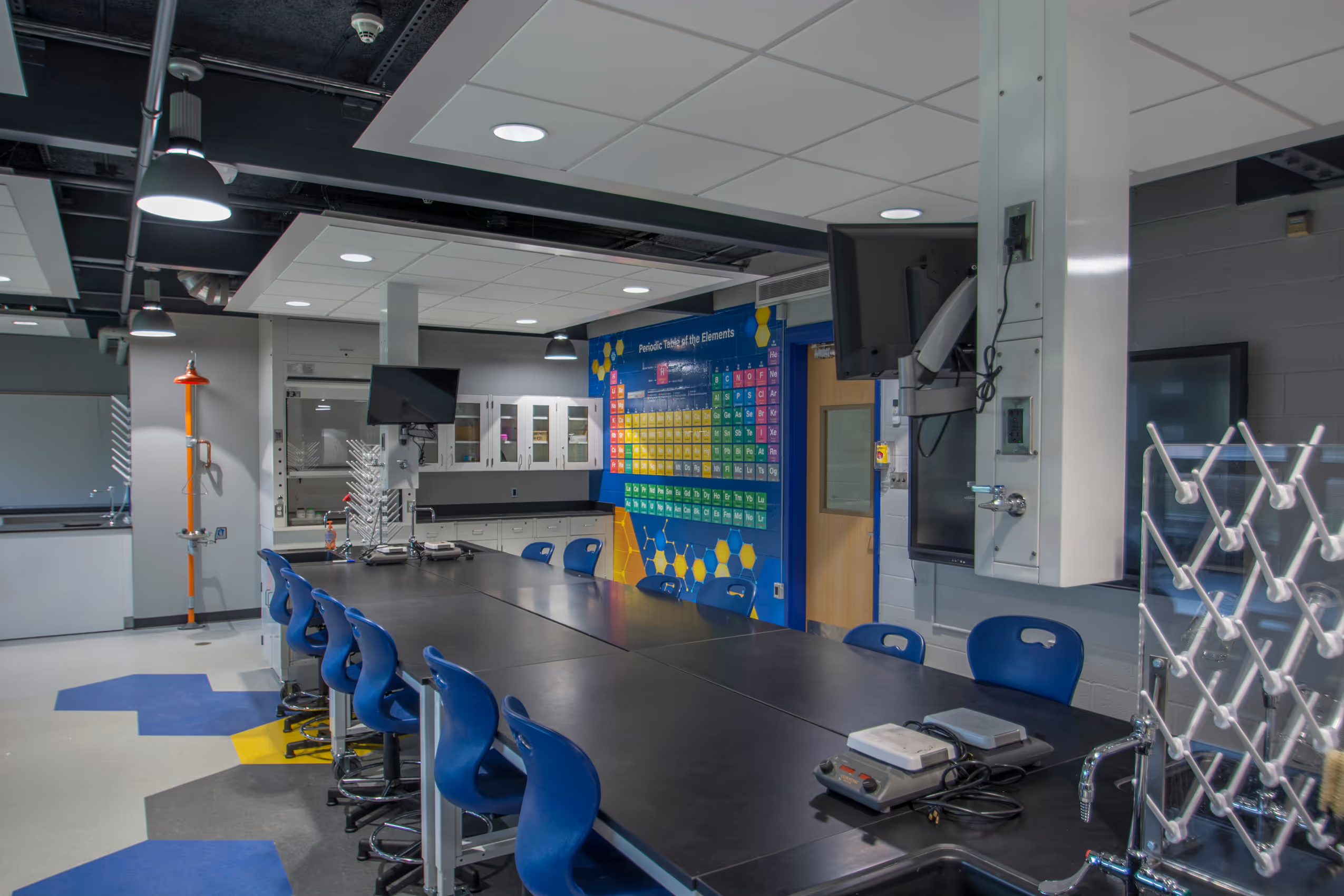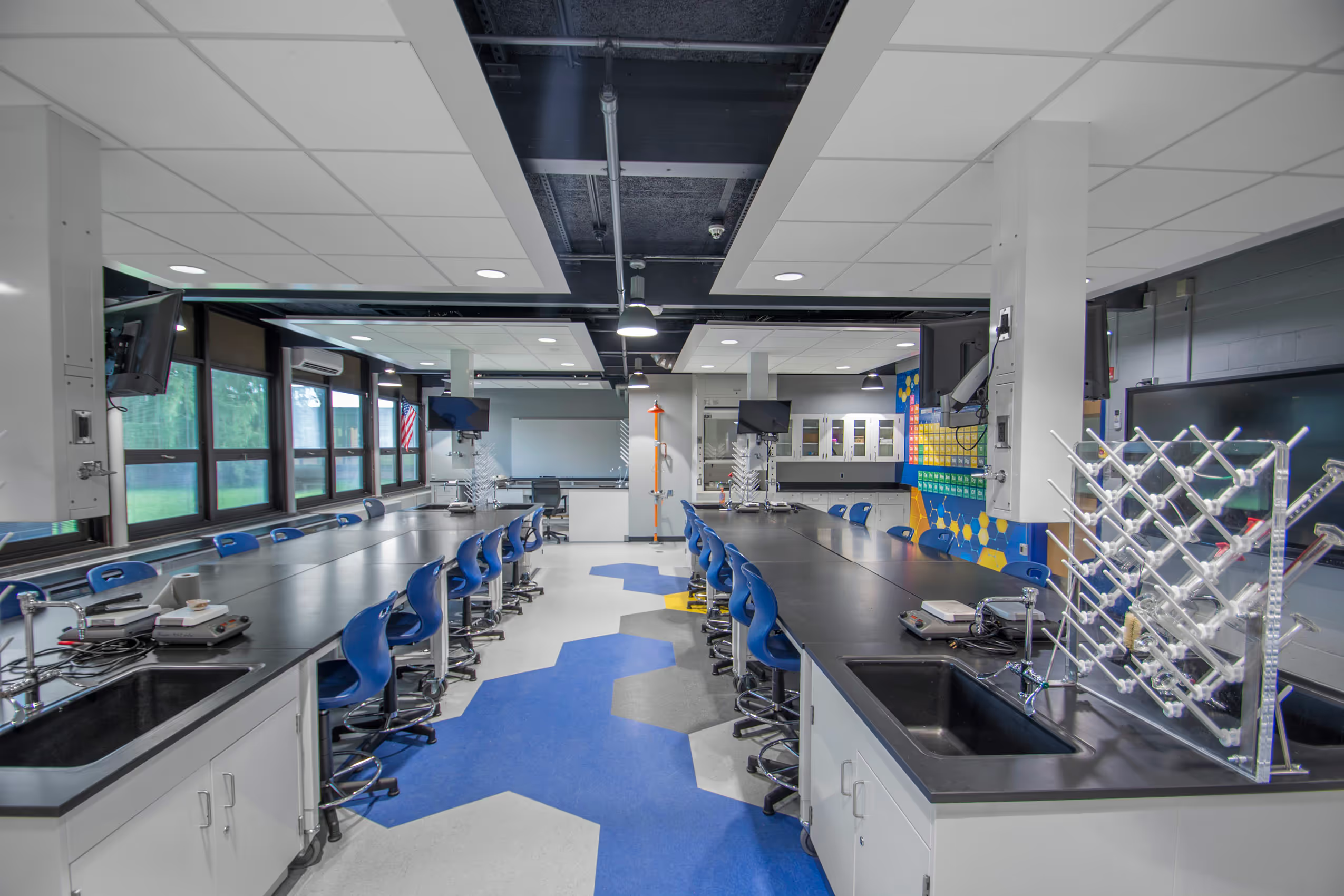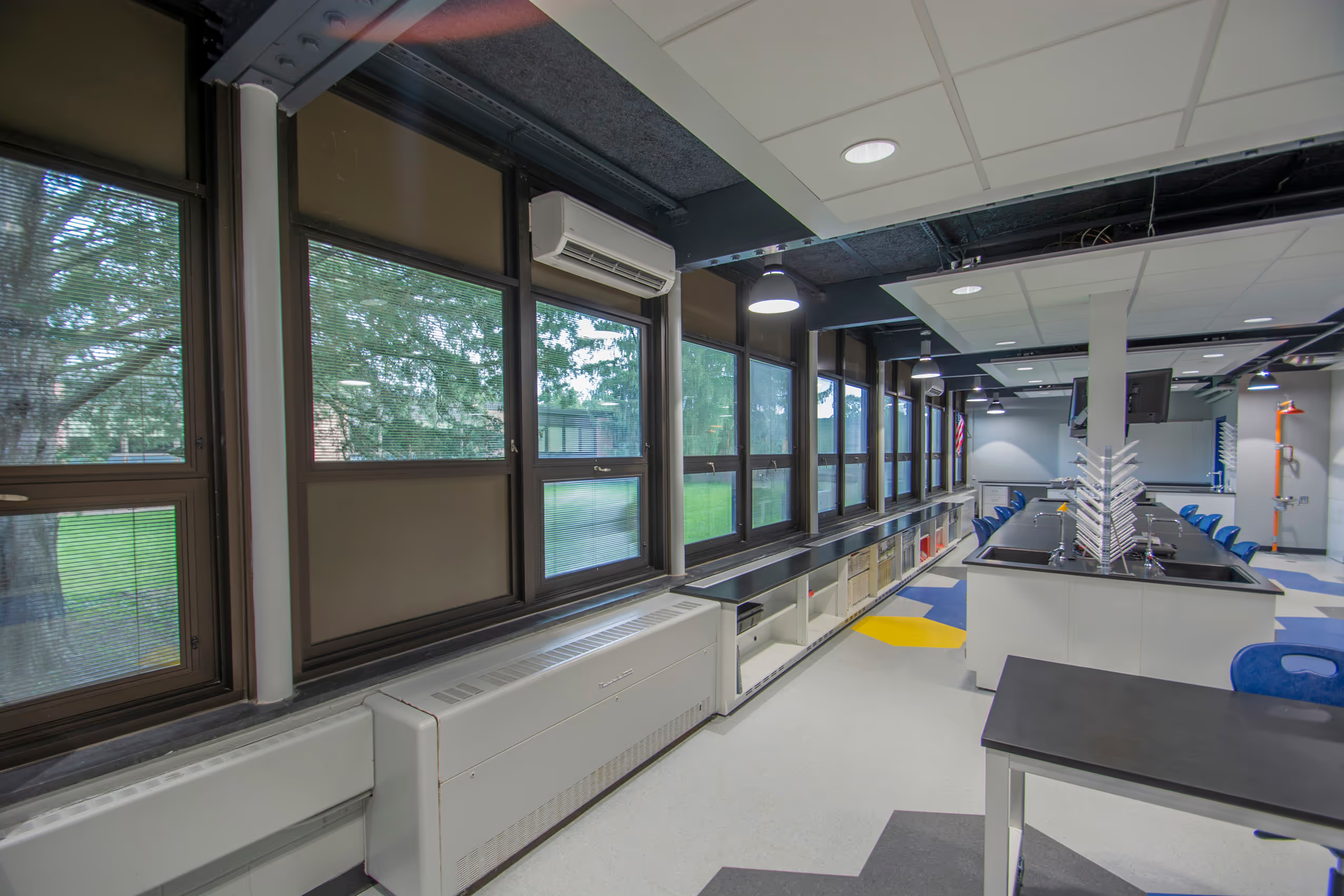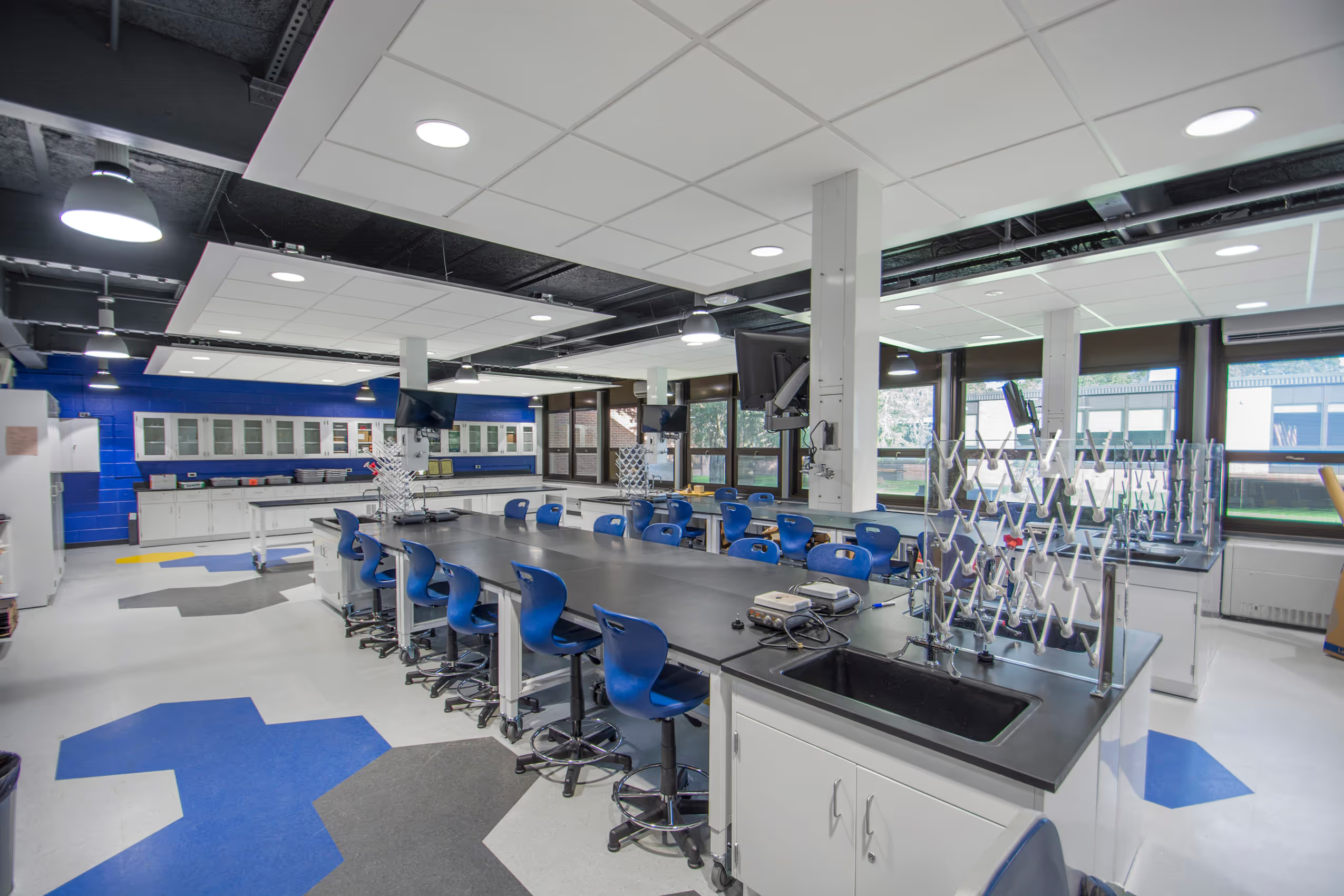How to Design a Lab
Designing a lab involves planning safe, efficient, and adaptable spaces that meet regulatory standards while supporting education, research, or industrial goals. Key steps include needs assessment, workflow planning, equipment selection, and compliance checks. A well-designed lab maximizes productivity, ensures safety, and future-proofs facilities against evolving scientific and technological demands.
Why Lab Design Matters
A lab isn’t just four walls and some benches—it’s a stage where safety, compliance, and productivity shine or flop. How to design a lab isn’t just a facilities question; it’s a science strategy.
When design takes a back seat, things get messy fast. Poor layouts waste valuable square footage, force researchers to zig-zag around obstacles, and crank the risk factor. A misplaced fume hood or crowded aisle isn’t just inconvenient—it can turn a normal workday into an OSHA incident report. Efficiency, too, goes out the window when your workflow looks like a hamster maze.
But smart design flips the script. A well-planned lab maximizes usable space, makes safety equipment accessible, and creates a logical flow from one task to the next. That means fewer accidents, smoother operations, and happier people completing their work.
And here’s the kicker: science doesn’t stand still. Research priorities change, technology evolves, and budgets shift. That’s why designing for adaptability matters. Modular furniture, flexible layouts, and scalable infrastructure mean today’s lab for teaching chemistry can be tomorrow’s hub for biotech research—without tearing down walls.
Good lab design is like good comedy timing—you don’t always notice when it’s perfect, but you feel it when it’s off.
Curious how flexibility fits into modern lab planning? Explore ICI Scientific’s lab furniture solutions, which are built to evolve as your needs do.

Key Considerations Before You Start
The first step in figuring out how to design a lab isn’t picking paint colors—it’s knowing what the space is supposed to do. An educational lab needs flexibility for rotating classes, a research lab demands precision and adaptability for evolving projects, and industrial labs require rugged setups built for heavy workloads. If you skip defining the lab’s purpose, you end up with a “one-size-fits-none” space that frustrates everyone.
Then there’s the elephant in the room: budget. Designing a lab is like balancing a science experiment with accounting spreadsheets—you must stretch dollars without sacrificing safety or performance. Smart choices, like investing in modular furniture, pay off long term by avoiding costly renovations when your needs inevitably change. Timelines matter, too; a rushed project is a recipe for mistakes, but endless planning without action stalls progress.
Regulatory requirements can’t be treated as fine print—they’re the backbone of safe, compliant design. Safety codes dictate everything from emergency exits to fire suppression systems. Ventilation must meet strict standards to protect workers from harmful fumes. Accessibility requirements, like ADA compliance, ensure the lab serves everyone. Cutting corners here is like ignoring lab goggles during an acid test—it only ends badly.
And don’t forget future-proofing. Science doesn’t move in slow motion, and your lab design shouldn’t either. Build with adaptability in mind: scalable infrastructure, energy-efficient systems, and layouts that can flex as technology advances. A lab that can’t evolve is destined for early retirement.
Designing a lab isn’t just about solving today’s problems but anticipating tomorrow’s challenges.

Essential Components of Lab Design
When mapping out how to design a lab, the details make or break the space. You don’t want a shiny new lab that looks impressive but functions like a traffic jam. The core components keep people safe, smooth workflows, and scientific progress.
- Layout & Workflow
- The lab’s floor plan is more than aesthetics—it’s choreography. Benches, equipment, and safety stations should be placed to minimize bottlenecks and maximize efficiency. Think of it as designing a kitchen for scientists: the “work triangle” has to make sense, or productivity crashes.
- Furniture & Casework
- Here’s where the big decision hits: modular vs. fixed. Modular systems allow reconfiguration as projects evolve, while fixed casework is sturdy but rigid. Materials matter, too. Wood is cost-effective, painted steel balances durability with design, and stainless steel is the gold standard for chemical resistance and heavy-duty use.
- Ventilation & Safety Equipment
- Fume hoods, eyewash stations, and fire safety systems aren’t accessories—they’re lifelines. Proper ventilation ensures toxic fumes leave the lab instead of your lungs. Safety stations must be easy to reach, not hidden behind a pile of equipment like a forgotten fire extinguisher.
- Work Surfaces
- Your bench surface takes more abuse than any other piece of lab furniture. Depending on the hazards, chemical-resistant laminate, epoxy resin, or stainless steel are common choices. Choose poorly, and you’ll replace worktops faster than you can say “spill cleanup.”
- Utilities & Infrastructure
- Sinks, gas lines, power outlets, and data ports need thoughtful placement. Researchers shouldn’t have to run extension cords across the room just to plug in essential equipment. Infrastructure should support the science, not trip it up.
The bottom line: ignore these essentials, and you’re designing a headache, not a lab.

Steps in the Lab Design Process
Designing a lab isn’t just about dropping benches into a room and hoping for the best—it’s a process. Following the right steps ensures the space is safe, efficient, and built to last. Here’s the roadmap for designing a lab without a renovation nightmare.
- Needs Assessment
- Step one: figure out who uses the lab and what they do inside it. An industrial testing lab has different needs than a community college chemistry classroom. Talk to users, identify workflows, and clarify priorities. Skip this step and you’re basically building blind.
- Space Planning
- Once the purpose is clear, it’s time to map out the floor plan. This is where square footage meets strategy. The goal is to maximize usable space while keeping workflows smooth and safe. Think wide aisles, logical bench placement, and safety equipment where people can reach it.
- Preliminary Drawings & 3D Renderings
- Ideas on paper are one thing, but seeing the lab in 3D makes it real. Renderings let stakeholders walk through the design virtually, catching bottlenecks or awkward layouts before they become expensive mistakes. It’s basically a test drive for your lab.
- Engineering & BIM Support
- Here’s where the technical magic happens. Integrating the design with building systems—HVAC, plumbing, gas lines, and electrical—isn’t glamorous but critical. BIM files and engineering support ensure the lab doesn’t just look good, it works within the larger facility.
- Installation & Testing
- Finally, furniture and equipment are installed, utilities connected, and systems tested. Compliance checks also happen here, ensuring ventilation, safety stations, and infrastructure all meet the required codes. The ribbon-cutting comes only after everything proves it can handle real-world use.
Good labs aren’t accidents—they result from a step-by-step process that balances vision with practicality.

Lab Design Solutions by ICI Scientific
When it comes to designing a lab, ICI Scientific isn’t just a supplier—it’s a partner who guides the process from idea to installation. Their approach combines robust products with design expertise, giving institutions a complete solution instead of a patchwork of parts.
- Full Product Range
- ICI manufactures everything needed to fully equip a lab: casework in wood, painted steel, and stainless steel; fume hoods that meet rigorous safety standards; and flexible lab furniture built to adapt as needs change. This wide portfolio means clients don’t juggle multiple vendors—ICI delivers a one-stop shop.
- Design Planning & Visualization
- Their services extend far beyond catalog sales. ICI offers lab design planning, 3D renderings, and BIM/AutoCAD support to ensure practical concepts are fully integrated with building systems. Stakeholders can see how the space will function before installing the first piece of furniture.
- Compliance & U.S. Manufacturing
- Safety and compliance are baked into ICI’s process. All products are manufactured in the USA, built to meet strict standards while ensuring longevity and reliability. Institutions can trust that every bench, hood, and cabinet aligns with safety codes from day one.
- Customization & Project Coordination
- No two labs are the same, and ICI leans into that reality. Their teams work with schools, research centers, and industrial clients to provide customizable, project-specific coordination. From selecting finishes to designing workflows, they tailor solutions that align with each institution’s unique goals.
With ICI Scientific, lab design isn’t a guessing game—it’s a guided process that combines expertise, flexibility, and products built to last.
Related Searches
Laboratory design principles
Best practices for lab layout
Safety considerations in laboratory design
Modular laboratory design benefits
Steps to plan a laboratory


